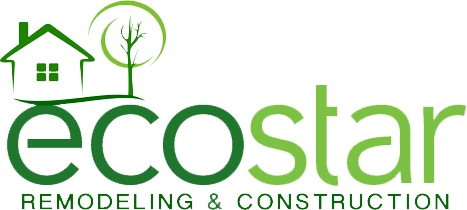
Alameda, California is a city that values its waterfront, tree canopy, and distinct neighborhoods, and homeowners here increasingly want remodeling choices that minimize environmental impact while elevating comfort. The good news is that many sustainable strategies are simply smarter ways to build, offering long-term durability and healthier indoor environments. By considering the entire life cycle of materials and the performance of the building envelope, you can reduce waste, trim energy use, and create spaces that feel better day after day. As you evaluate options, it is helpful to review trusted resources focused on home remodeling to align sustainability goals with Alameda’s housing styles and climate.
Sustainable Design Starts with Smart Planning
The first pillar of environmentally thoughtful remodeling is using the space you already have more effectively. A clever reconfiguration can delay or eliminate the need for additions, which carry materials and energy costs. Opening a kitchen to capture borrowed light, carving a pocket office from an oversized hallway, or turning an underused porch into a conditioned mudroom can transform your home’s function with a modest material footprint. When additions are necessary, designing compact volumes with high insulation levels and careful air sealing prevents energy waste and supports comfort during windy afternoons.
Eco-Friendly Materials and Practices
Material selection has an outsized effect on environmental impact. Durable, repairable products—solid-core doors, quality hardware, and proven plumbing fixtures—stay in service longer and reduce replacement frequency. Engineered wood from responsibly managed sources, tile with recycled content, and countertops that balance toughness with maintainability are strong choices. Low- and zero-VOC paints and adhesives support indoor air quality, an important consideration during damp seasons when windows may remain closed. Reuse is powerful too: salvaging original trim, refinishing floors, and repurposing cabinetry boxes with new doors keeps character intact and reduces landfill contributions.
Energy Efficiency and Water Conservation
Performance upgrades are the quiet heroes of sustainable remodeling. Air sealing combined with appropriate insulation and high-performance windows and doors dramatically improves thermal comfort, reduces drafts, and cuts HVAC loads. For Alameda’s climate, focusing on attic insulation, crawlspace encapsulation where appropriate, and well-detailed window installations yields meaningful gains. Efficient heating and cooling—whether high-efficiency furnaces, heat pumps, or zoned systems—paired with smart controls fine-tune comfort while using less energy. Balanced ventilation ensures fresh air delivery without excessive heat loss, and filtration supports indoor air quality during seasonal particulates.
Water stewardship deserves equal attention. In baths and kitchens, fixtures that deliver strong performance at lower flow rates conserve without compromising experience. Leak detection at supply connections and regular maintenance of seals and caulks prevent waste. Outside, drought-tolerant planting and thoughtful irrigation respond to regional conditions while keeping landscapes inviting. Permeable hardscape elements help manage runoff during heavier rains and protect foundations and neighboring properties.
Building a Resilient, Low-Impact Alameda Home
Construction-phase practices can also shrink a project’s environmental footprint. Planning deliveries to reduce trips, protecting materials from damage, and sorting waste for recycling all contribute. Clear jobsite rules—dust control, storm drain protection, and secure storage—support both the neighborhood and workers. When homeowners and contractors share sustainability goals from the outset, small decisions compound into measurable benefits.
Electrification is another path many Alameda homeowners explore. Preparing for induction cooking, heat pump water heating, and future electric vehicle charging positions your home for cleaner energy sources as the grid evolves. Even if you adopt these technologies over time, running conduit and ensuring panel capacity during a remodel minimizes disruption later. Roof assessments for future solar installations can also be incorporated into planning so that structural and electrical provisions are ready when you are.
Healthy materials and acoustics impact daily well-being. Choosing finishes with low chemical emissions reduces odors and irritants, while acoustic treatments—insulated interior walls, soft surfaces, and well-sealed doors—create tranquility in compact neighborhoods. Daylighting strategies, reflective surfaces, and switchable task lighting reduce reliance on artificial lighting and support circadian comfort.
Finally, sustainability is about care and longevity. Designing details that shed water, specifying finishes that can be renewed rather than replaced, and documenting maintenance routines extend the life of your remodel. Alameda’s salty air and breezes reward robust exterior details—flashing, sealants, and fasteners—chosen for coastal performance. Inside, well-ventilated baths and carefully detailed kitchens maintain freshness and appearance for years.
Remodeling with the environment in mind does not mean compromising comfort or style. On the contrary, sustainable choices often lead to homes that are quieter, brighter, and easier to maintain. If you are considering a project, partner with a team that aligns design excellence with responsible building practices. Begin by exploring local approaches to home remodeling that suit Alameda’s climate and character, and map a plan that meets your goals today while caring for tomorrow.
FAQs
Are Sustainable Materials More Difficult to Maintain?
Not necessarily. Many durable, low-emission materials are specifically chosen for easy care, such as quartz counters, large-format tile, and high-quality paints that resist scuffs and clean easily.
Do Energy Upgrades Really Make a Difference?
Yes. Air sealing, insulation, and efficient systems reduce drafts, stabilize temperatures, and lower energy use while improving comfort in every season.
Can I Phase Sustainability Improvements?
Absolutely. Plan infrastructure during the remodel—conduit, panel capacity, insulation—so future steps like induction cooking or solar integration are straightforward.
If you are ready to reduce your project’s footprint while elevating everyday comfort, connect with a local team that understands Alameda’s homes and climate. Start a conversation about home remodeling tailored to Alameda, California, and move toward a healthier, more resilient home.
Prev article
